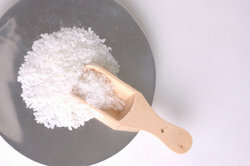How do you recognize a neutralization?
In connection with the acid-base theory, chemistry lessons at school are often referred to as neutralization. But how do you actually recognize such a reaction? If you look at the reactants involved, you will definitely not be difficult to determine.

Neutralization - chemical backgrounds
- Before showing how neutralization can be recognized, it is important to consider the processes involved in such a reaction.
- Two reaction partners are involved in a neutralization reaction; on the one hand the bases, on the other hand the acids.
- When acid and base are combined, a neutral solution is created. The acidic and basic effects of the reactants involved do not add up, but rather they are canceled out.
- The reaction of hydrochloric acid and sodium hydroxide solution is a classic neutralization, in which water and common salt are formed as end products according to the following formula: NaOH + HCl -> NaCl + H2O.
- The reaction is exothermic, that is, it becomes energy free. This phenomenon can be recognized by the heating of the solution.
- In order to check whether this reaction is actually a neutral solution, the pH value can be used. If this reaches a value of 7 after the check, the solution is neutral.
- But be careful! If a weak acid is mixed with a strong base or a weak base with a strong acid, the pH value can deviate from 7 during the neutralization. In the above example, the pH value of water was determined, which is formed as the reaction product. But normally the pH value is not at this neutral point, but at the so-called. Equivalence point designated as neutral because here the acid and base proportions are the same in terms of quantity. But this also deviates from 7.
Basic salts - an explanation from chemistry
Salts are actually neutral crystals, aren't they? What may surprise many is that it ...
How to recognize neutralization reactions
- But how do you recognize neutralization? To do this, you need to look at the reaction partners. If acids and bases are mixed with one another, neutralization takes place.
- You can recognize an acid, for example, by its ability to release protons (H +), while bases can absorb them.
- If you have strong acids and bases, you can also look at the reaction products: A salt and a water are always formed here. You can find out whether an acid or base is strong in the corresponding tables.
- As you can see, it is not that difficult to recognize a neutralization reaction!
How helpful do you find this article?


